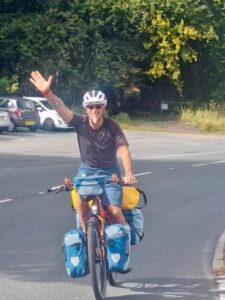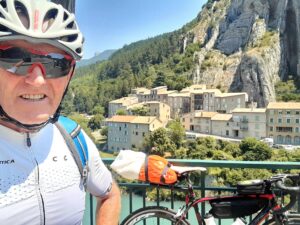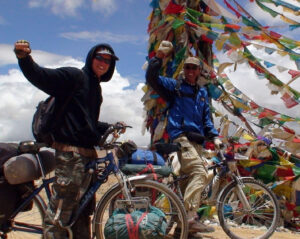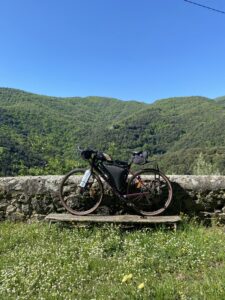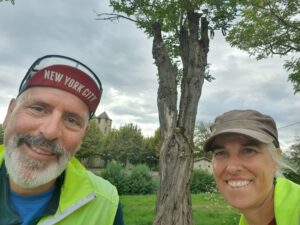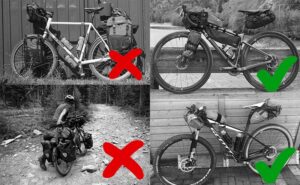 Contributor: Peter Mitchell
Contributor: Peter Mitchell
A post primarily for European cycle tourists. New Zealand does not have a viable railway system like Europe. Successive governments have preferred roads over trains, so the roads are busy with heavy trucking and private cars.
Why is this important to know? It means that roads between major towns or small provincial cities in NZ can be busy and dangerous to cycle on. Many roads don’t have a shoulder (space on the left to ride). Passing cars can be going 100kmph, and generally, NZ drivers are very unaccommodating of other road users.
Please don’t come to New Zealand to ride on our State Highway system, BUT there are two amazing alternatives that you should consider.
New Zealand has three main brevets each year (self-supported, multi-day endurance rides) and a national cycleway network of 22 “great rides,” BUT the touring bike and bags you use at home are unlikely to be good for these trails and routes. So read on for our recommendations …
If you are coming to NZ to ride, bring a mountain bike with gravel tyres or a gravel bike. Make sure both styles have good volume in the tyres. You will want to vary the pressure depending on the ride.
- Don’t bring heavy front and back panniers – this is a big mistake. These are hopeless in the wind and dangerous on a forest trail.
- Aim to carry about 12 kilos, excluding food and water—you will thank the author when you are riding the Timber Trail or Alps to Ocean.
- Also, consider leaving the tent, sleeping bag, and cooking stuff at home and using Warmshowers or NZ Top 10 holiday cabins. This can be very inexpensive if traveling in a pair.
So what about the cycle routes? Here are some amazing cycle trails and paths in NZ:
- The Tour of Aotearoa (that’s the Māori name for NZ). Top to bottom of NZ, about 30 days are required. See the path here. Buy the book here. Join a tour.
- The Kopiko Aotearoa (that’s the Māori name for NZ). Ride the widest part of NZ from cape to cape. It takes about 10 days. See the path here. Buy the book here. Join a tour.
- The Great Southern Brevet. See the path here. Buy the book here.
- The 23 Great Rides. Some are day rides and some multi-day trips, but they’re all really great.
Other things you should know about bike touring in NZ: the sun is very strong in New Zealand. In summer, the ozone hole over the Antarctic opens a little wider and covers more of New Zealand. This means the daily UV can be very high. You’ll easily burn within 15 to 30 minutes, so keep it covered or use sunscreen.
Gravel comes in three sizes: itty-bitty, medium, and small boulder. In other words, if you see the surface marked as “gravel,” it could be fast or slow riding ahead, depending on the size of the gravel. Generally, Europeans struggle with gravel because it’s not a common riding surface in Europe.
The short story is: go slow and stay upright on corners.
Once you get out of the main cities and provincial towns, New Zealand can be very remote. This means cell phones won’t work, GPS might be obscured by trees, then add bad weather on top of that, and the situation can become dangerous. Carrying an EPLB (emergency personal locator beacon) is advised in many places.
The country has two helpful websites: the NZTA journey planner, which shows road closures and other issues, and the Metrology Service’s website – particularly the rain radar and wind direction. Both are worth checking daily to see what the conditions ahead will be.
If you need help, you can stop at the nearest house or business, and people are normally very happy to help you. New Zealanders are very friendly, except when they’re in a car.
It’s best to avoid drinking water from streams and instead fill up from drinking taps in parks, halls, and schools.
Summary: New Zealand is an amazing location for cycle touring, but you have to bring the right bike and gear, study well, choose bike safe routes, and avoid roads.
Check out Peter’s YouTube trail playlist to get a better feel of the terrain and surfaces in New Zealand.

